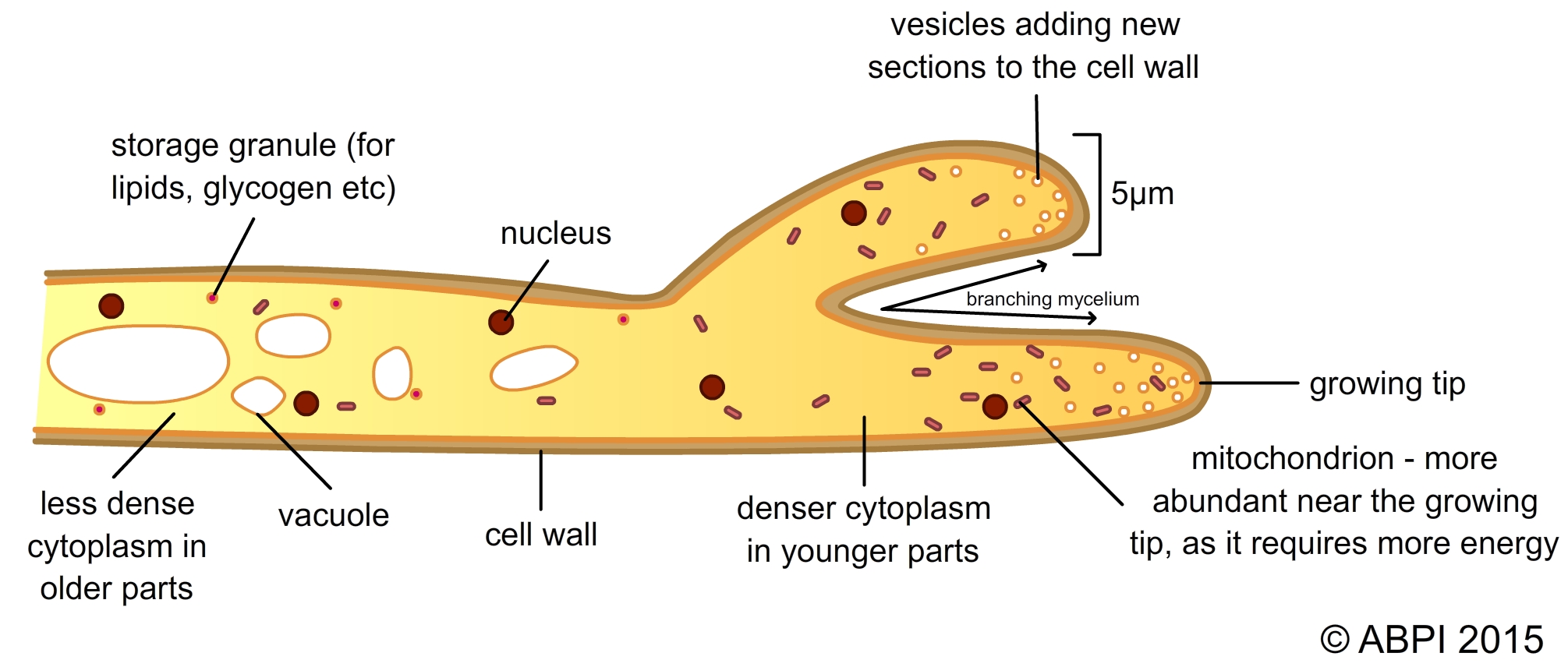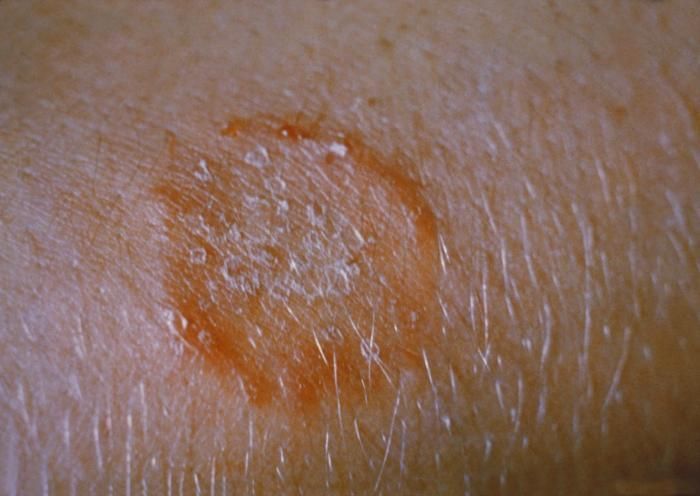This topic takes on average 45 minutes to read.
There are a number of interactive features in this resource:
 Human biology
Human biology
The fungi are eukaryotic organisms. The best known fungi are the mushrooms and toadstools that are such important decomposers and the yeast used in baking and brewing.

The fungi we eat, and the fungi we find decomposing fallen trees in our woodlands, do not cause communicable human diseases – although if we eat the wrong type, they may poison us.
There are many different forms of fungi but they have a number of common characteristics:

The structure of fungal hyphae
Fungi do not cause many human diseases. There are a number of fungal skin conditions, where the fungus digests away the skin and causes irritation. These include athlete’s foot and ringworm.

Ringworm is a fungal infection of the skin, unpleasant but not serious (Photo credit: CDC/ Dr Lucille K. Georg)
Aspergillosis is one very serious type of fungal infection that can affect the lungs, the brain and other organs. It often affects people who are already ill or have suppressed immune systems – for example people affected by HIV/AIDS. A healthy immune system can usually destroy the fungus.
The main way that fungal pathogens affect people is by the damage they cause our crops. There are around 10,000 fungal pathogens that affect crop plants around the world, causing malnutrition and even starvation as they destroy the food people need to eat.